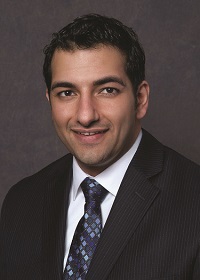By EB5 Investors Magazine Staff
EB5 Investors Magazine is pleased to announce the Top 5 Rising Stars in the EB-5 industry, selected in an industry-wide vote. To be eligible, distinguished attorneys are increasing their footprint in the EB-5 industry.
For more information, or to contact any of these attorneys, we invite you to view their listings at www.EB5Investors.com/directories.
Senior Associate
Green and Spiegel LLC

Matthew T. Galati is a senior associate in Green and Spiegel LLC’s Philadelphia office, where he leads the firm’s EB-5 and Grenada Citizenship-by-Investment functions. Green and Spiegel was founded in 1962 and is one of North America’s oldest immigration law firms. The firm offers comprehensive immigration solutions on both sides of the U.S. and Canada border. Since the beginning of his career, Galati has been responsible for the filing of hundreds of EB-5 petitions. He also routinely counsels entrepreneurial clients on the treaty trader and investor e-visas, intracompany transferee L-1 visas and EB-1 visa alternatives. Galati is an active member of AILA, where he serves on the Philadelphia Chapter’s Executive Committee. He has authored dozens of industry-related articles and is quoted in national media. Galati has presented on the EB-5 program coast-to-coast and throughout Asia. He was twice named as a SuperLawyers Rising Star in the field of business immigration.
What trends are you seeing in the EB-5 industry?
I see more investors looking at EB-5 with frustration fueling their investment motives. Major parts of our employment-based visa system are dysfunctional, the most egregious is the perennial shortfall of H-1B visas and the prohibitively-long waiting times affecting applicants from certain countries in EB-2 and EB-3 categories. With the exception of China, a parent gifting the investment funds to a child early enough in the latter’s college career can secure residency upon graduation. In China, more investors are looking to the E-2 through Grenadian citizenship to minimize the disruption of visa retrogression.
Why did you get involved in the EB-5 industry?
My grandfather immigrated after docking in New York Harbor, and my wife immigrated after an interview with me at her side in a USCIS office, so I have a deep personal connection with my clients’ circumstances. Regarding EB-5, I was fortunate to work with some of the industry’s brightest minds early in my career. Their passion for this program fueled mine. It is rewarding knowing that I am representing a family so they can achieve the American dream, while at the same time raising the economic outlook for my fellow Americans.
Chair, Immigration Law Practice
Norris McLaughlin & Marcus P.A.

Raymond G. Lahoud is chair of the Norris McLaughlin & Marcus P.A. Immigration Law Practice. His EB-5 experience spans every aspect of the program including: formations and management of regional centers and representation of investors from across the world, including the Middle East, Asia, Europe, Central and South America, Australia and Europe. His experience of direct and regional center investments includes travel to several Middle Eastern, European and Asian countries to present educational sessions for possible investors. Lahoud offers leadership and counsel with economic development organizations, municipalities, developers, quasi-government entities and planning commissions to implement and market the EB-5 program as an alternative funding source for public and private projects. When a client seeks EB-5 related work – whether it be an individual proposing a possible EB-5 project or wanting to create a regional center or an investor from any country, Lahoud directs the process from start to finish.
What do you think the future of the EB-5 industry looks like?
The EB-5 program is likely to experience much-needed reform, which will include measures such as addressing the need to increase the minimum investment thresholds for potential EB-5 investors, both those in TEAs and those outside of TEAs, and allow for annual increases in the threshold that are beyond the minimal inflation rate. Further, the future of the EB-5 program will likely include increasing federal scrutiny, investigations and minimum qualification thresholds given the recent unfortunate increase in the number of EB-5 fraud related matters.
What trends are you seeing in the EB-5 industry?
Until recently, the EB-5 program was relatively unknown and limited geographically both in and outside the United States. Over the last few years, the benefits of the EB-5 program have become increasingly well-known throughout the Middle East, Australia, South and Central America and in many African countries. Additionally, American businesses, local municipalities, universities, colleges, developers, economic and planning groups and agencies have become increasingly knowledgeable and willing to participate in the EB-5 program through regional center investments. These organizations understand that the EB-5 program is a more efficient and inexpensive way to fund all types of public and private projects.
Samuel Newbold
Manager, EB-5 Practice Group
Barst Mukamal & Kleiner LLP

Samuel Newbold is manager of the EB-5 Practice Group at Barst Mukamal & Kleiner LLP. Newbold represents individual investors, regional centers and developers who are seeking EB-5 capital for projects. He assists EB-5 investors and their families through the EB-5 process. Newbold counsels regional centers and developers seeking EB-5 capital for their projects and advises regional center and developer clients on EB-5 compliance best practices. His experience in all aspects of the EB-5 program includes more nuanced areas such as project compliance, appellate and motion practice, removal defense, EB-5 capital return workouts and emerging EB-5 markets.
What do you think the future of the EB-5 industry looks like?
I think industry stakeholders will remain cautiously optimistic for the immediate future. Volatile politics and programmatic uncertainty will continue undermining positive momentum. The industry is adapting the best that it can, but will not fully reset until more permanent rules and policies are confirmed. Once that happens, the industry will normalize and the state of the industry will be clearer. I would love to see an increase in the immigrant visa quota reserved for the EB-5 category. This is the number one threat to program participation currently. Otherwise, I would like more carveouts and incentives for specific types of EB-5 investments.
What trends are you seeing in the EB-5 industry?
I am seeing a revival of small projects, both in the pooled direct and regional center context. With demand slowing in China, EB-5 raises seem to be smaller in size while offering above average returns.
Why did you get involved in the EB-5 industry?
Our firm is very active in the start-up and entrepreneurial areas of immigration and EB-5 is an extension of that. I believe that EB-5 aligns with our firm’s core values: that immigration is good for the American economy and its people.
Kristal Ozmun
Partner
Miller Mayer

Kristal Ozmun is a partner at Miller Mayer LLP. She focuses her practice on employment-based immigration with a unique specialization in the EB-5 preference category. Ozmun represents EB-5 regional centers in matters related to immigration law, including designation, compliance and governance. She also advises EB-5 investors in navigating the immigration process and represents a variety of individual clients seeking non-immigrant and immigrant status. Ozmun is a member of the Massachusetts and New York State bars. She received her J.D. from Suffolk University Law School and her Bachelor of Arts from the College of Charleston.
What trends are you seeing in the EB-5 industry?
The most troubling current USCIS adjudication trend is the retroactive application of seemingly new bridge financing policy to long-pending I-924 applications and I-526 petitions. Perhaps equally as troubling is USCIS’ issuance of requests for evidence on I-526 petitions submitted by minors. In these RFEs, USCIS questions whether the minors made irrevocable investments as required given that the subscription contracts may be voidable. These RFEs are particularly disturbing given that subscribing as a minor may be the only way for many Chinese investors to avoiding aging out as dependents on their parents’ I-526 petitions.
Why did you get involved in the EB-5 industry?
At the outset, amazing mentors! Steve Yale-Loehr, Carolyn Lee and Nick Hinrichsen taught me about the program’s importance and about how to practice well within the sphere. I stayed because the EB-5 program is an interesting, niche area of immigration law that is also an incredibly valuable economic tool for the United States. I am very hopeful that the program will receive a much-needed facelift in the form of new legislation in the near future so that it can continue to provide needed investment into the United States.
Senior Associate
Lee & Lee PS

Sara Wang joined Lee & Lee PS in 2010 and her practice focuses primarily on immigration and civil litigation. Particularly, Wang has extensive expertise in U.S. business and investment based immigration visa programs, including EB-5. She has personally consulted with and filed applications for over hundreds of immigrant families. She also specializes in legal issues faced by the investors once they gained entry into the United States. Wang is often invited as a guest of honor in immigration seminars overseas and other speaking engagements. Prior to joining Lee & Lee, she worked at the King County Prosecuting Attorney’s Office for six years and between 2005-2008 worked in Shanghai in the fields of media and employment law. Wang graduated with distinction from the University of Washington with dual degrees and received her J.D. from Seattle University School of Law. She is fluent in Mandarin Chinese.
What trends are you seeing in the EB-5 industry?
As retrogression grows for mainland China born investors, it can be expected (and we are already seeing) that the petition amount for EB-5 will drop compared to the 2014-2016 numbers. Until congress addresses the retrogression issue, the popularity of this program is expected to suffer. On the other hand, the SEC and USCIS are cooperating and being more vigilant than in the past two years. Due to their influence I believe that the industry will self regulate more and weed out a lot of the poor and fraudulent investment projects, creating a safer environment for foreign investors.
Why did you get involved in the EB-5 industry?
By pure chance! But I soon discovered that it deeply resonated with me. As a child from a business immigrant family myself, I inherently understand the stakes involved with each investor family. This is and can be an anxiety-ridden process for the investors and I look to sooth that using my legal expertise and experience. It takes an immense amount of courage to leave everything familiar behind to start anew in a foreign country, especially when financial investment is also at risk. I deeply believe that my clients deserve to have an advocate who truly cares about what they go through.
DISCLAIMER: The views expressed in this article are solely the views of the author and do not necessarily represent the views of the publisher, its employees. or its affiliates. The information found on this website is intended to be general information; it is not legal or financial advice. Specific legal or financial advice can only be given by a licensed professional with full knowledge of all the facts and circumstances of your particular situation. You should seek consultation with legal, immigration, and financial experts prior to participating in the EB-5 program Posting a question on this website does not create an attorney-client relationship. All questions you post will be available to the public; do not include confidential information in your question.







